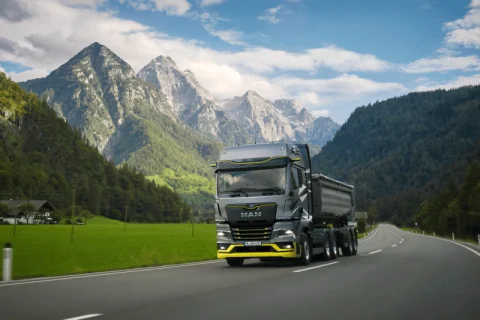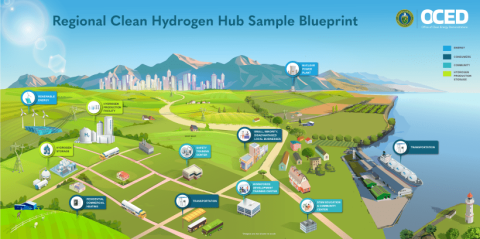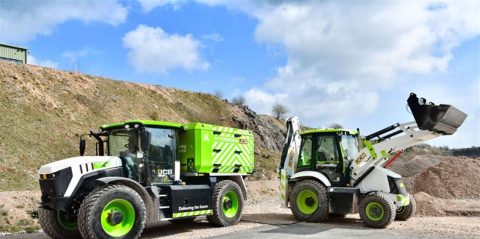Introduction
Think of the biggest “what if” moments in history—decisions, inventions, or discoveries that could have completely changed the course of the world. One such “what if” is the fuel that powers our lives. What if hydrogen, not gasoline, had become the foundation of transportation over 160 years ago? A world without smog-choked cities, oil crises, and the environmental cost of fossil fuels might not just be an aspiration but a reality.

In 1863, Étienne Lenoir built the Hippomobile, the first hydrogen car invented, proving that a cleaner future was possible. But history took a different turn. Instead of refining hydrogen technology, industries placed their bets on gasoline, shaping a future powered by fossil fuels. The result? A world grappling with climate change. In this blog, we will learn about the history of hydrogen cars, why they were forgotten, and whether hydrogen transport can still shape the future.
The First Hydrogen Car Invented: The Hippomobile (1863)
In 1863, Étienne Lenoir, a Belgian-French engineer, created the Hippomobile, the first hydrogen-powered car in history. This early vehicle ran on a hydrogen-gas mixture, a revolutionary concept for its time.
Key Features of the Hippomobile:
✔ Hydrogen-powered engine—Used a hydrogen-gas mix instead of gasoline.
✔ 9 km journey—Successfully drove through Paris at 3 km/h (1.8 mph).
✔ Based on Lenoir’s 1860 engine—One of the first practical internal combustion engines.
But despite its innovation, the Hippomobile never caught on. Why?
- No hydrogen infrastructure—There were no refueling stations.
- Engine inefficiencies—It overheated and lacked power.
- Gasoline’s rise—The discovery of cheap petroleum-based fuels made gasoline the industry standard.
The Forgotten Pioneers Before Lenoir

But let’s rewind a bit, shall we? Before Lenoir rocked the scene with his game-changing engine in 1860, there were other fearless inventors laying the groundwork.
Take Nicéphore and Claude Niépce, for example. These French trailblazers crafted an early version of the internal combustion engine nearly 50 years earlier.
Their radical experiment included:
✔ Controlled explosions powered by moss, coal dust, and resin.
✔ Inspired later combustion engine designs, influencing modern cars. Ultimately laying the foundation for future inventors like Lenoir.
✔Proved hydrogen’s potential as a clean fuel source.
So while Lenoir may have stolen the spotlight, let’s not forget the pioneers who paved the way for the engine that keeps us moving today. The journey from fiery experiments to hydrogen-powered cars was one heck of a ride!
Milestones in Hydrogen Transportation
The story of hydrogen-powered transportation has seen many advancements, but only a few have been picked up by the public. From early combustion engines to modern fuel cell vehicles, each milestone has played a crucial role in shaping the evolution of hydrogen as a fuel source.
- 1806–The First Hydrogen Combustion Engine: The first engine that ran on hydrogen and oxygen was made by Swiss inventor François Isaac de Rivaz. It was a big step forward, but it wasn’t good enough to catch on with everyone.
- 1863–The Hippomobile: Étienne Lenoir developed the first hydrogen-powered car, demonstrating that alternative fuels could power vehicles. However, the rise of gasoline soon pushed hydrogen aside.
- 1970s—BMW’s First Hydrogen Car: As the world faced oil crises, BMW developed an experimental hydrogen-powered car based on the BMW 520. While it never entered mass production, it marked a renewed interest in hydrogen as a fuel.
- 2000s—The Fuel Cell Revolution: Three of the planet’s most significant car manufacturers, like Toyota, Honda, and Hyundai, have taken the lead in the promotion of hydrogen fuel cell technology that has resulted in the commercialization of models such as the Toyota Mirai and Hyundai Nexo.
- Present Day—A Hydrogen-Powered Future: Both the green hydrogen production and refueling stations are moving forward; thus, hydrogen has become a realistic option for use in large vehicles such as trucks, trains, ships, and even airplanes.
From Rivaz’s early combustion engine to today’s advanced fuel cell vehicles, hydrogen transportation has made remarkable progress. While it has faced setbacks, the push for clean energy solutions may finally give hydrogen the role it was always meant to play.

H₂ Evolution: How Hydrogen Technology Progressed
Hydrogen-powered vehicles have evolved in three key ways:
- Hydrogen Internal Combustion Engines—Early designs used hydrogen as a fuel, similar to gasoline engines.
- Hydrogen Fuel Cells—Modern cars convert hydrogen into electricity, with zero emissions.
- Green Hydrogen Production—Today’s focus is on producing hydrogen from renewable energy sources.
As research continues, hydrogen evolution could play a crucial role in the future of sustainable transportation.
Challenges in Hydrogen Adoption
Hydrogen-powered vehicles could greatly change transportation for the better, but there are some hurdles that have slowed it down:

- Production Expenses—Extracting green hydrogen from renewable energy is costly. Currently, most of the hydrogen available in the market comes from natural gas, which is not environmentally friendly.
- Lack of Charging Facilities—Hydrogen refill points are fewer in number when compared to electric car chargers or gas pumps, henceforth making it impractical for large numbers of the population to shift toward hydrogen vehicles.
- Transportation and Storage Issues—Hydrogen has low energy density and must be stored under high-pressure conditions or in the form of cryogenic storage, both of which need more money and need research and development for further advancements.
- Electric Vehicle Competition—With the advancements in battery technology and the proliferation of charging networks, EVs have gained more popularity. This makes hydrogen-powered vehicles a less attractive option.
- Delayed Support from Government and Industry—There is reluctance from many governments and automotive manufacturers around investing significant resources in hydrogen technology as electric vehicles are currently leading the clean vehicle market.
If policies related to infrastructure and hydrogen fuel cell technology change, the issues outlined above could be addressed, helping in the integration of hydrogen fuel as a primary system of transportation.
What If Hydrogen Had Replaced Gasoline?

If hydrogen had dominated from the start, the world would look very different today:
✔ Lower Carbon Emissions—No gasoline-powered pollution.
✔ Energy Independence—Countries would rely on hydrogen, not oil imports.
✔ Better Air Quality—No harmful fossil fuel emissions.
According to a 2022 report by the International Energy Agency, hydrogen fuel could reduce global CO₂ emissions by 6 gigatons per year by 2050—but only if governments and industries invest in hydrogen infrastructure now.
Conclusion: Learning From Our Past
The forgotten story of hydrogen cars offers a valuable lesson as we navigate today’s energy transition. When was the first hydrogen car invented? The answer dates back decades, yet despite its early beginnings, hydrogen technology didn’t immediately revolutionize the automotive industry. Innovation alone isn’t enough—timing, policy support, infrastructure, and public acceptance all play crucial roles in determining which technologies succeed.
Understanding when the first hydrogen-powered car was invented and why it didn’t immediately change the world helps us see the complex factors at play in any technological revolution. This perspective matters tremendously as we face climate challenges that will require multiple solutions—likely including the hydrogen technology that’s been waiting in the wings for over 50 years.
The future of sustainable transportation is in our hands.
So would you invest in a hydrogen car? Share your thoughts!












